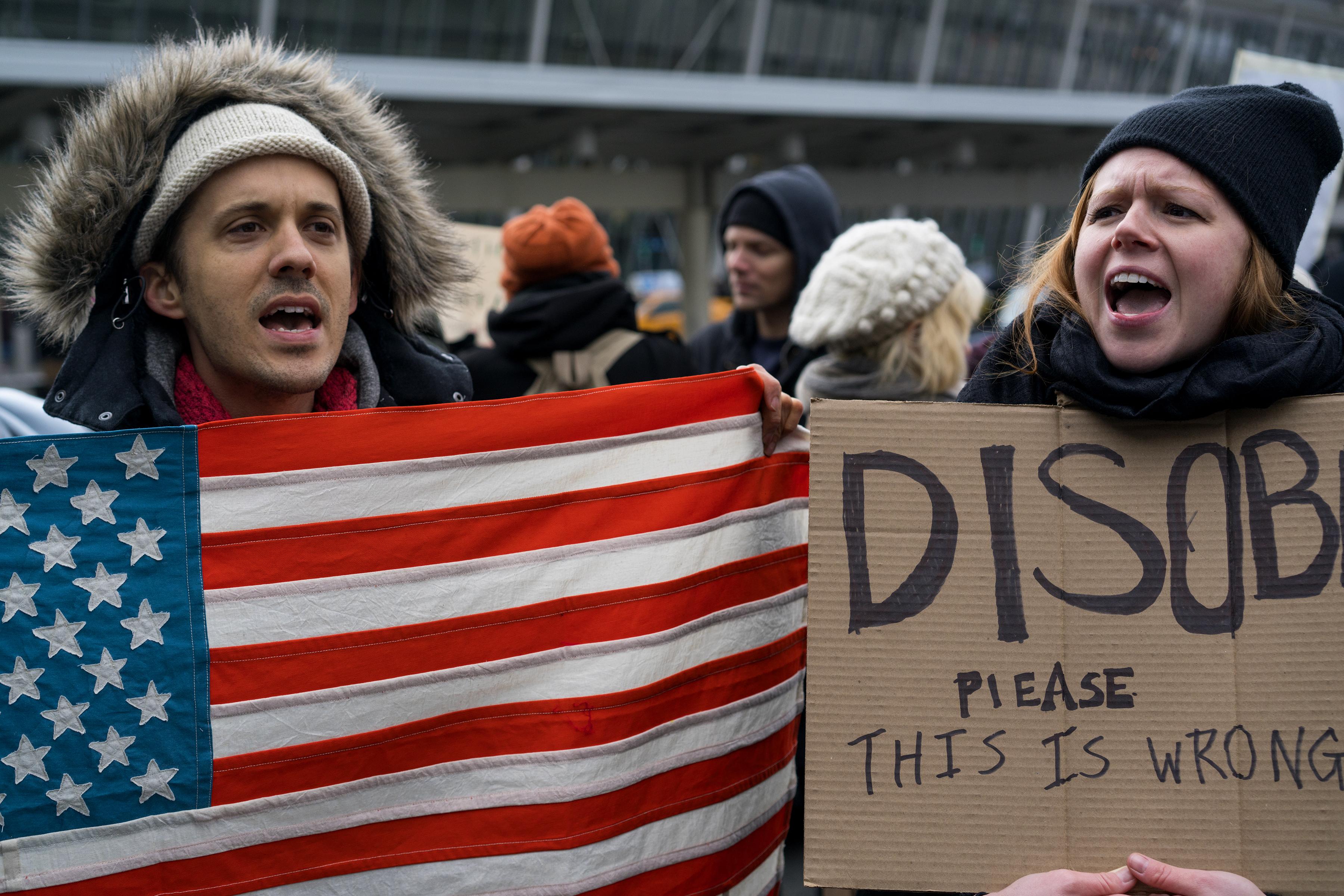Intentionally or not, big brands help fund fake news
 Take, for instance, a story that falsely claimed former President Barack Obama had banned Christmas cards to overseas military personnel. Despite debunking by The Associated Press and other fact-checking outlets, that article lives on at «Fox News The FB Page,» which has no connection to the news channel although its bears a replica of its logo.
Take, for instance, a story that falsely claimed former President Barack Obama had banned Christmas cards to overseas military personnel. Despite debunking by The Associated Press and other fact-checking outlets, that article lives on at «Fox News The FB Page,» which has no connection to the news channel although its bears a replica of its logo.
And until recently, the story was often flanked by ads from big brands such as the insurer Geico, the business-news outlet Financial Times, and the beauty-products maker Revlon.
This situation isn’t remotely an isolated case, although major companies generally say they have no intention of bankrolling purveyors of fake news with their ad dollars. Because many of their ads are placed on websites by computer algorithms, it’s not always easy for these companies to steer them away from sites they find objectionable.
Google, the biggest player in the digital ad market, places many of these ads. The company says it bars ads on its network from appearing against «misrepresentative content»—its term for fake news—yet Google spokeswoman Andrea Faville acknowledged that the company had sold ads on the site with the Christmas-card story. Those ads vanished after The Associated Press inquired about them. Faville declined to comment on their disappearance.
ADS THAT GO WHERE THEY WILL
Media advertising was much simpler when companies had only to buy ad space in newspapers or magazines to reach readers in a particular demographic category. Digital ads, by contrast, can wind up in unexpected places because they’re placed by automated systems, not sales teams, and targeted at individuals rather than entire demographics.
In effect, these ads follow potential customers around the web, where a tangle of networks and exchanges place them into ad slots at online publications. These middlemen have varying standards and levels of interest in helping advertisers ensure that their ads avoid controversy.
«A brand wouldn’t have a real foolproof way of not getting on sites that have issues like this,» said Joseph Galarneau, CEO of the New York City startup Mezzobit, which helps publishers and marketers manage advertising technology.
AUTOMATIC FAKE-NEWS FUNDING
Such automated ads are a major income source for fake news stories, which may have influenced voters in the U. S. presidential election. False stories can undermine trust in real news—and they can be dangerous. A widely shared but untrue story that pegged a Washington, D. C., pizzeria as part of a Hillary Clinton-run child sex trafficking ring led a man to fire a gun in the restaurant.
This largely invisible web of automated exchanges and ad networks funds millions of online sites, from niche, small-traffic blogs to professional news and entertainment sites with audiences in the tens of millions. By tracking web users to smaller sites, advertisers can reach them more cheaply than by limiting themselves to «premium» websites like the Washington Post, CBS or ESPN.
The megaphone of social media can give marginal sites a big lift. When a fake-news story spreads on Facebook, lots of people end up on the article’s original site—and ads follow. The result: Big companies help fund some low-rent websites trafficking in conspiracy theories and other unverified claims, at the measly rate of a fraction of a cent per person per ad.
WHERE «FAKE» FALLS THROUGH THE CRACKS
While advertising technology vendors have safeguards in place to help mainstream advertisers avoid porn or hate speech, those don’t always work for spoof news sites, said Marc Goldberg, CEO of Trust Metrics. Advertisers pay him to keep them off unwanted sites.
That’s partly because «fake news» can be hard to define. And while advertisers can come up with «blacklists» of sites to avoid, there’s no guarantee that ad-tech vendors farther down in the food chain will honor it, said Susan Bidel, an advertising analyst for research firm Forrester.
Many publishers and advertisers use Google’s ad technology without having Google sell their ads. In those cases, Google’s misrepresentative-content policy doesn’t apply.
BRANDS IN A BIND
When the AP pointed out that a Chrysler Ram truck ad popped up on a story saying that the United Nations was making the U. S. pay reparations to African-Americans—it’s not—Fiat Chrysler said it works with ad companies to scour individual sites and block them from loading its ads if it finds them «harmful. »
An ad for would-be Amazon rival Jet.com, owned by Walmart, showed up on a misleading story claiming California had legalized child prostitution. The company said in an emailed statement that it has filters that stop its ads from loading «on these kinds of sites,» but wouldn’t provide more detail or explain its criteria.
Walgreens ads also popped up next to the child prostitution story on the site The Red Elephants, but the drugstore chain has since prevented its ads from appearing there, a company spokesman said.
A person who responded to an email sent to The Red Elephants declined to discuss the site’s advertising, but insisted that the child-prostitution story was true. The person declined to provide their name.
A Financial Times spokeswoman said in an emailed statement that the media company was «frustrated» to learn that its ads appeared next to fake news like the Christmas-card story, saying the situation underscored the «very real risk» of using automated ads. «We think the ad technology ecosystem could, and should, do more to improve brand safety,» she said.
Revlon declined to comment. A Geico spokeswoman said the company didn’t know about its ad that ran on the spoof Fox News site.
Explore further: Study: Ad-tech use shines light on fringe, fake news sites
© Source: https://phys.org/news/2017-01-intentionally-big-brands-fund-fake.html
All rights are reserved and belongs to a source media.


 Einige Unternehmer aus dem Silicon Valley kritisieren Donald Trump nicht nur, sondern wollen auch Betroffenen helfen. Trump schießt derweil auf Twitter zurück.
Einige Unternehmer aus dem Silicon Valley kritisieren Donald Trump nicht nur, sondern wollen auch Betroffenen helfen. Trump schießt derweil auf Twitter zurück. 
 WASHINGTON (AP) — The Latest on U. S. President Donald Trump and his ban on refugees from Muslim-majority countries (all times local):
WASHINGTON (AP) — The Latest on U. S. President Donald Trump and his ban on refugees from Muslim-majority countries (all times local): 
 試合中はあまり感情を表に出さないフェデラーが両手を突き上げ、感極まって涙した。「5カ月前にはこの場所を想像すらできなかった。素晴らしいカムバックだった」。テニスの4大大会第1戦、全豪オープン最終日の29日、男子シングルス決勝で第17シードのロジャー・フェデラー(スイス)と第9シードのラファエル・ナダル(スペイン)が対戦。フェデラーには4大大会18度目の優勝だが、昨年の左膝の故障を乗り越えてつかんだ歓喜の瞬間は、これまでとひと味もふた味も違い格別だった。
試合中はあまり感情を表に出さないフェデラーが両手を突き上げ、感極まって涙した。「5カ月前にはこの場所を想像すらできなかった。素晴らしいカムバックだった」。テニスの4大大会第1戦、全豪オープン最終日の29日、男子シングルス決勝で第17シードのロジャー・フェデラー(スイス)と第9シードのラファエル・ナダル(スペイン)が対戦。フェデラーには4大大会18度目の優勝だが、昨年の左膝の故障を乗り越えてつかんだ歓喜の瞬間は、これまでとひと味もふた味も違い格別だった。 
 テニスの4大大会第1戦、全豪オープン最終日の29日、男子シングルス決勝で第17シードのロジャー・フェデラー(スイス)と第9シードのラファエル・ナダル(スペイン)が対戦。先にセットを奪われる展開の中、ナダルは執念の追い上げを見せた。第4セットはフェデラーに一つのブレークポイントも与えずに取ると、最終セットも第1ゲームを先にブレークしてリード。
テニスの4大大会第1戦、全豪オープン最終日の29日、男子シングルス決勝で第17シードのロジャー・フェデラー(スイス)と第9シードのラファエル・ナダル(スペイン)が対戦。先にセットを奪われる展開の中、ナダルは執念の追い上げを見せた。第4セットはフェデラーに一つのブレークポイントも与えずに取ると、最終セットも第1ゲームを先にブレークしてリード。 
 【1月30日 時事通信社】難民や移民の入国を停止・制限したトランプ米大統領による大統領令から一夜明けた28日、米国や世界各地で混乱と不安が拡大した。ニューヨークのジョン・F・ケネディ空港をはじめ、各地の空港で当局がイラク人らを多数拘束。航空各社は送還の可能性のある旅客の米国便への搭乗を拒否し、影響を受けた人は数百人に上った。ニューヨークの連邦地裁は28日夜、合法な滞在資格を持つ人々の送還停止を命じ、大統領令の執行を一部阻止した。 大統領令はシリア難民の無期限受け入れ停止などが柱。米メディアによると、米入国を90日間停止されるのはシリア、イラク、イラン、イエメン、リビア、ソマリア、スーダンの7カ国の出身者。イスラム教徒が多数派の国ばかりだ。ロイター通信によると、大統領令によって400人近くに影響が及んだ。100人以上が乗り継ぎで米国への入国を拒否され、航空会社が200人近くの米国便搭乗を受け付けなかった。プリーバス大統領首席補佐官は29日午前、NBCテレビの番組で「まだ二十数人が拘束されている」と述べた。 ケネディ空港では大統領令署名後、一時少なくとも12人が拘束された。その後、一部は解放され、米国に入国した。米軍の通訳などとして勤務したイラク人男性は解放後、空港で報道陣に「まるで自分が何か悪いことをしたかのようだった。驚いた」と振り返った。 空港には地元選出の下院議員や2000人以上のデモ隊が詰め掛け、残る拘束者の解放を要求した。デモ隊はシカゴやシアトル、ロサンゼルス、ダラスなど全米各地の空港に集結し、抗議した。29日も9都市で大統領令への抗議デモが計画され、反発が強まっている。 また、米国の大学で学ぶ多数の留学生が国外に足止めされていると報じられた。こうした中、トランプ大統領は28日、「(入国制限は)非常に順調だ。空港やそこら中を見て分かる通りだ」と自らの措置を自賛した。 一方、米政府高官は28日、大統領令が永住権カード(グリーンカード)保有者も対象にしていると明らかにした。7カ国出身者は、米国に再入国可能か領事館などに個別に確認する必要があると警告している。 永住権者には衝撃が走り、政治活動のためイランから米国へ逃れたモハマド・ホセイン・ザイヤさん(33)はロイターに「米国でこんなことが起きるとは思わなかった」と話した。当局者はCNNテレビに、制限対象になる恐れがある人は米国外に出ない方がいいと話している。 ロイターなどによれば、IT大手のグーグルは、制限対象となる可能性のある社員の米国帰国を指示。米国での滞在許可を持つイラン人社員は、大統領の署名の数時間前に米国に戻ったという。制限対象国出身者の海外出張などを見合わせる企業が増えることも確実だ。(c)時事通信社
【1月30日 時事通信社】難民や移民の入国を停止・制限したトランプ米大統領による大統領令から一夜明けた28日、米国や世界各地で混乱と不安が拡大した。ニューヨークのジョン・F・ケネディ空港をはじめ、各地の空港で当局がイラク人らを多数拘束。航空各社は送還の可能性のある旅客の米国便への搭乗を拒否し、影響を受けた人は数百人に上った。ニューヨークの連邦地裁は28日夜、合法な滞在資格を持つ人々の送還停止を命じ、大統領令の執行を一部阻止した。 大統領令はシリア難民の無期限受け入れ停止などが柱。米メディアによると、米入国を90日間停止されるのはシリア、イラク、イラン、イエメン、リビア、ソマリア、スーダンの7カ国の出身者。イスラム教徒が多数派の国ばかりだ。ロイター通信によると、大統領令によって400人近くに影響が及んだ。100人以上が乗り継ぎで米国への入国を拒否され、航空会社が200人近くの米国便搭乗を受け付けなかった。プリーバス大統領首席補佐官は29日午前、NBCテレビの番組で「まだ二十数人が拘束されている」と述べた。 ケネディ空港では大統領令署名後、一時少なくとも12人が拘束された。その後、一部は解放され、米国に入国した。米軍の通訳などとして勤務したイラク人男性は解放後、空港で報道陣に「まるで自分が何か悪いことをしたかのようだった。驚いた」と振り返った。 空港には地元選出の下院議員や2000人以上のデモ隊が詰め掛け、残る拘束者の解放を要求した。デモ隊はシカゴやシアトル、ロサンゼルス、ダラスなど全米各地の空港に集結し、抗議した。29日も9都市で大統領令への抗議デモが計画され、反発が強まっている。 また、米国の大学で学ぶ多数の留学生が国外に足止めされていると報じられた。こうした中、トランプ大統領は28日、「(入国制限は)非常に順調だ。空港やそこら中を見て分かる通りだ」と自らの措置を自賛した。 一方、米政府高官は28日、大統領令が永住権カード(グリーンカード)保有者も対象にしていると明らかにした。7カ国出身者は、米国に再入国可能か領事館などに個別に確認する必要があると警告している。 永住権者には衝撃が走り、政治活動のためイランから米国へ逃れたモハマド・ホセイン・ザイヤさん(33)はロイターに「米国でこんなことが起きるとは思わなかった」と話した。当局者はCNNテレビに、制限対象になる恐れがある人は米国外に出ない方がいいと話している。 ロイターなどによれば、IT大手のグーグルは、制限対象となる可能性のある社員の米国帰国を指示。米国での滞在許可を持つイラン人社員は、大統領の署名の数時間前に米国に戻ったという。制限対象国出身者の海外出張などを見合わせる企業が増えることも確実だ。(c)時事通信社
 岐阜県美濃加茂市の出直し市長選で29日、前職の藤井浩人氏(32)が再選された。逆転有罪判決を受け、選挙で「判決の不当性」を訴えた藤井氏は求心力維持を図るが、刑事被告人としての立場は変わらない。任期も辞職前と変わらず、5月に実施される任期満了に伴う市長選では、対立候補擁立の動きもある。 「もう一回、藤井しっかりやれと言われ、まずはうれしい」。当選が確実になった29日夜、藤井氏は事務所で支援者らに拍手で迎えられた後、笑顔を見せた。 出直し選で各党は準備期間不足などを理由に静観を決めた。一方で藤井氏が再選すれば5月には再び市長選となるため、有権者には出直し選への否定的な意見も目立った。こうした声を意識してか、藤井氏は27日の総決起大会で「批判は今日もいただいた。今回の決断が必要であったと言ってもらえるような市づくりを進めたい」と語っていたが、29日には「政治家として多くの人に理解をいただいた」と強調した。 投票率は、過去最低だった前回(52・86%)を上回り、陣営が目標に掲げた55%も超した。藤井氏は「信任をいただいたので、胸を張って市長職を全うしていきたい」と述べた。 藤井氏は、仮に市長在職中に受託収賄などの有罪が確定すれば失職し、それに伴う市長選には立候補できない。最高裁の結論は5月の市長選後、4年以内には出るとみられる。仮に5月に3選を決めても、いつ最高裁の判断が出るかわからない不安定な条件での市政運営を迫られることになる。藤井氏は「裁判は裁判で公正な判断を出してほしい。市政は市政で全力で務めていく」と話した。 5月に予定される市長選で対立…
岐阜県美濃加茂市の出直し市長選で29日、前職の藤井浩人氏(32)が再選された。逆転有罪判決を受け、選挙で「判決の不当性」を訴えた藤井氏は求心力維持を図るが、刑事被告人としての立場は変わらない。任期も辞職前と変わらず、5月に実施される任期満了に伴う市長選では、対立候補擁立の動きもある。 「もう一回、藤井しっかりやれと言われ、まずはうれしい」。当選が確実になった29日夜、藤井氏は事務所で支援者らに拍手で迎えられた後、笑顔を見せた。 出直し選で各党は準備期間不足などを理由に静観を決めた。一方で藤井氏が再選すれば5月には再び市長選となるため、有権者には出直し選への否定的な意見も目立った。こうした声を意識してか、藤井氏は27日の総決起大会で「批判は今日もいただいた。今回の決断が必要であったと言ってもらえるような市づくりを進めたい」と語っていたが、29日には「政治家として多くの人に理解をいただいた」と強調した。 投票率は、過去最低だった前回(52・86%)を上回り、陣営が目標に掲げた55%も超した。藤井氏は「信任をいただいたので、胸を張って市長職を全うしていきたい」と述べた。 藤井氏は、仮に市長在職中に受託収賄などの有罪が確定すれば失職し、それに伴う市長選には立候補できない。最高裁の結論は5月の市長選後、4年以内には出るとみられる。仮に5月に3選を決めても、いつ最高裁の判断が出るかわからない不安定な条件での市政運営を迫られることになる。藤井氏は「裁判は裁判で公正な判断を出してほしい。市政は市政で全力で務めていく」と話した。 5月に予定される市長選で対立…

 ミャンマー最大の都市ヤンゴンの空港で、アウン・サン・スー・チー氏が率いる与党NLD=国民民主連盟の法律顧問など2人が銃で撃たれて死亡し、ミャンマーの警察は、発砲した男をその場で拘束して、動機や事件の背景を調べています。 ヤンゴン空港の国際線ターミナルのタクシー乗り場付近で、現地時間の29日午後5時ごろ、日本時間の29日午後7時半ごろ、男が突然、銃を発砲し、2人が死亡しました。 現地の警察によりますと、死亡したのは、アウン・サン・スー・チー氏が率いる与党NLDで法律顧問を務めるコー・ニー氏と、近くにいたタクシーの運転手で、警察は、発砲した50代の男をその場で拘束しました。 コー・ニー氏は、スー・チー氏に長年、法律的な助言を与えてきたほか、NLDの中では数少ないイスラム教徒の幹部として知られています。 警察は、男がコー・ニー氏の日程を把握していたことや、2丁の拳銃を用意していたことなどから、計画的な犯行と見ていますが、これまでのところ動機はわかっていません。 ミャンマーでは、西部のラカイン州で、少数派のイスラム教徒と多数派の仏教徒との間で緊張が続いていて、警察は、事件の背景について慎重に調べています。
ミャンマー最大の都市ヤンゴンの空港で、アウン・サン・スー・チー氏が率いる与党NLD=国民民主連盟の法律顧問など2人が銃で撃たれて死亡し、ミャンマーの警察は、発砲した男をその場で拘束して、動機や事件の背景を調べています。 ヤンゴン空港の国際線ターミナルのタクシー乗り場付近で、現地時間の29日午後5時ごろ、日本時間の29日午後7時半ごろ、男が突然、銃を発砲し、2人が死亡しました。 現地の警察によりますと、死亡したのは、アウン・サン・スー・チー氏が率いる与党NLDで法律顧問を務めるコー・ニー氏と、近くにいたタクシーの運転手で、警察は、発砲した50代の男をその場で拘束しました。 コー・ニー氏は、スー・チー氏に長年、法律的な助言を与えてきたほか、NLDの中では数少ないイスラム教徒の幹部として知られています。 警察は、男がコー・ニー氏の日程を把握していたことや、2丁の拳銃を用意していたことなどから、計画的な犯行と見ていますが、これまでのところ動機はわかっていません。 ミャンマーでは、西部のラカイン州で、少数派のイスラム教徒と多数派の仏教徒との間で緊張が続いていて、警察は、事件の背景について慎重に調べています。
 Alles beginnt mit einem makaberen Schülerstreich: Nachdem Karim, Pascal und Enno in ein Beerdigungsinstitut eingebrochen und ein Ringelschwänzchen zwischen die Pobacken ihres verstorbenen Lehrers Dirk Rebmann geklemmt haben (weil er nun mal «ein totales Schwein und Arschloch» war), schläft der total betrunkene Enno auf einer Rollbahre ein. Seine Kumpels lassen ihn zurück, am nächsten Morgen ist der Junge tot. Erfroren in der Kühlkammer.
Alles beginnt mit einem makaberen Schülerstreich: Nachdem Karim, Pascal und Enno in ein Beerdigungsinstitut eingebrochen und ein Ringelschwänzchen zwischen die Pobacken ihres verstorbenen Lehrers Dirk Rebmann geklemmt haben (weil er nun mal «ein totales Schwein und Arschloch» war), schläft der total betrunkene Enno auf einer Rollbahre ein. Seine Kumpels lassen ihn zurück, am nächsten Morgen ist der Junge tot. Erfroren in der Kühlkammer. 

